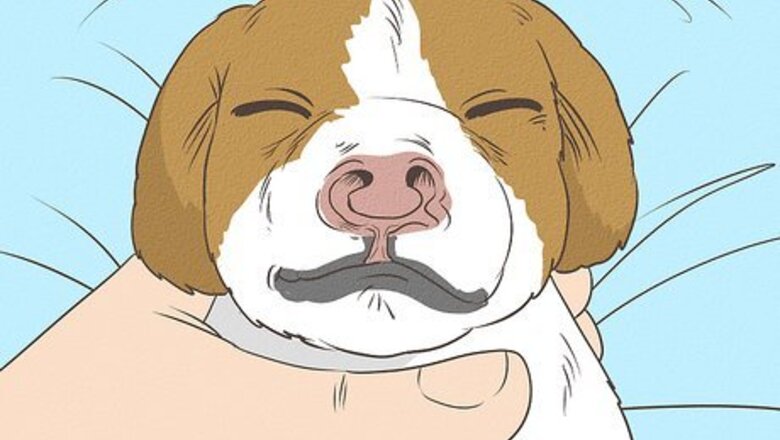
views
Caring for the Puppy
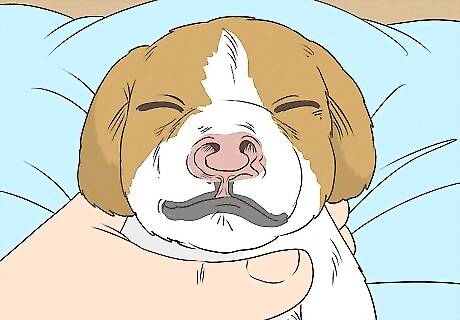
Identify the palate early. As soon as the puppies are born, rub a finger on the top of their mouths. If you feel an indentation in their upper palate, it may be a cleft palate. Frequent sneezing and a “runny” nose after nursing may also indicate a cleft palate. If you notice that puppies are not suckling or if they are unable to eat, it is most likely a cleft palate. Puppies with cleft palates often will latch to their mother's nipple, but they will be unable to suckle.
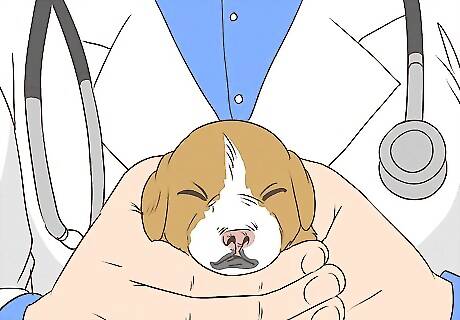
Go to the vet. The vet will be able to determine how severe the palate is and whether it is a hard or soft palate cleft. The vet can also provide you with supplies for tube feeding the puppy. Puppies with cleft palates often have other defects as well. Make sure the vet does a full examination to catch any other potentially problematic issues.
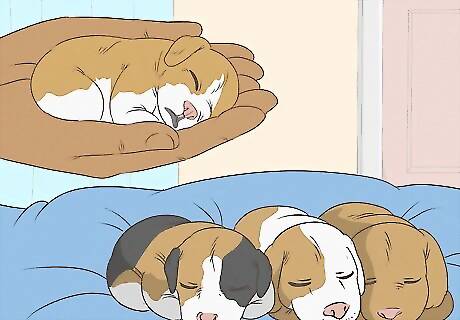
Determine if the puppy needs to be separated from their litter. If the puppy is underdeveloped in other ways, they may be at risk if left with the litter. In some cases, you may be able to let the puppy remain with the litter. This is ideal, because puppies cannot regulate their own temperature and the heat from the mother dog keeps them warm. You might separate them if: The puppy is too small and you're worried they will be crushed by the other puppies The mother dog rejects the puppy and refuses to feed or warm them.
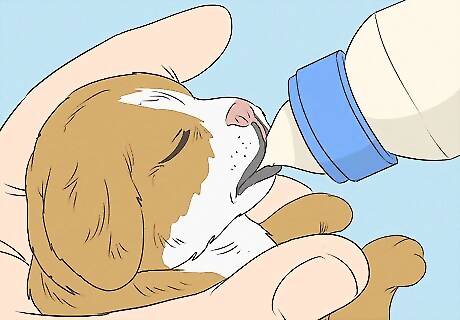
Create a 24-hour care schedule. Puppies with cleft palates require around-the-clock care if they are to survive. This is because the puppies need to be fed by hand every two to three hours (including nighttime). If you have to separate the puppy from its litter, you will also have to keep the puppy warm and help them eliminate by hand. Since cleft palate surgeries typically occur around the three month mark, you will need to continue your care schedule around the clock until the surgery occurs.
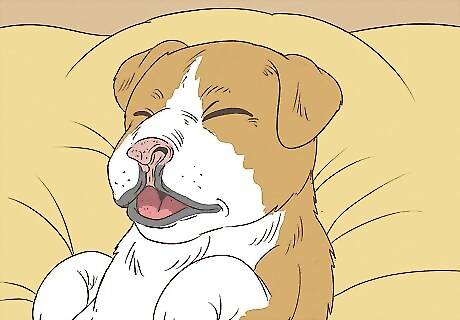
Watch for signs of pneumonia. Depending on the severity of the cleft palate, the puppy may be at risk for pneumonia or other respiratory diseases. These may be caused by the accidental inhalation of milk into their nose or lungs. You can prevent this by tube feeding the puppy instead of nursing or bottle feeding the puppy. Take the puppy to the vet immediately if you notice symptoms such as: Sneezing Coughing Nasal congestion and runny nose Labored breathing
Feeding the Puppy
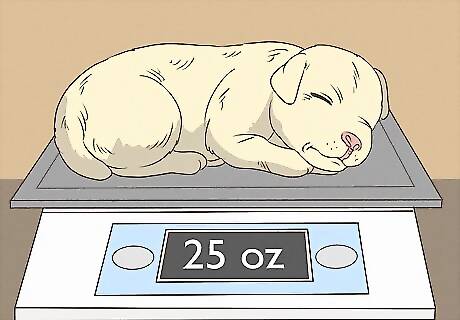
Weigh the puppy. How much you feed the puppy will depend on how much they weigh. If you are using a brand of puppy milk replacer, they may have directions on the side of the box. Otherwise, you can follow these general guidelines: If they are under eight ounces of weight, you should feed them one cc of milk per ounce of weight. If they are between 8 and 24 ounces, you should feed them one and a half cc of milk per ounce of weight. If they are over 28 ounces, you should feed them one ounce of milk per pound of weight.
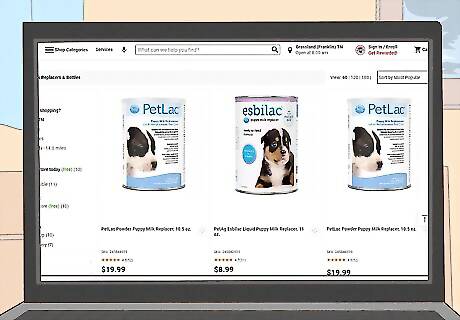
Prepare the puppy milk substitute. You can buy powdered or premade puppy milk replacer at a pet store, vet's office, or online. You can also make your own. Prepare the milk substitute according to its directions, and place it in the microwave to heat it up for 3 to 5 seconds. Make sure that the milk is warm, but not hot, before feeding the puppy. You can make homemade puppy milk substitute by mixing 10 ounces of goats milk, one tablespoon light corn syrup, one cup of plain white whole milk yogurt, and one egg yolk. Always use whole (not low-fat) dairy products. Just Born, Nurturall, and Esbilac are all commercial brands of puppy milk. You can buy these in pre-prepared cans or in powder form. If you cannot get puppy milk replacer or make a homemade substitute in the first 24 hours, you can use pedialyte instead. This is not a long term solution, however.
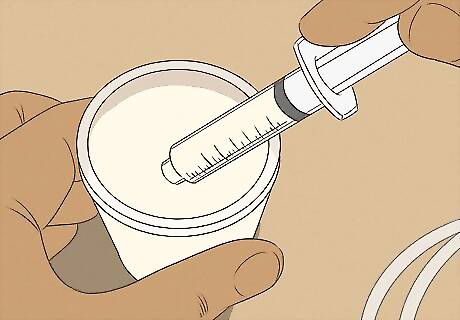
Fill the syringe. In general, you should use a 12 cc feeding syringe (or a syringe without the needle). Using the measurements on the side, fill it with the proper amount of milk substitute based on the puppy's weight.
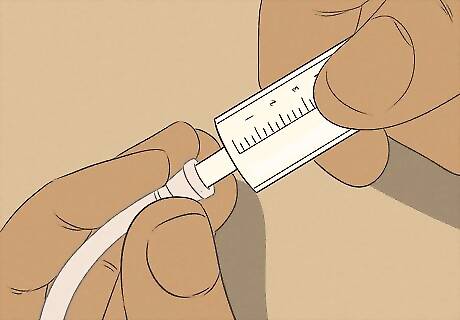
Attach a feeding tube to the syringe. This is a long tube that will be placed down the puppy's esophagus. Once you have attached it, draw a little formula through the tube until a drop or two comes out the other side. Place this tube in the puppy's mouth. They may suck on the end of the tube, helping you slowly guide the tube to the back of their throat. If you have never tube fed a puppy before, ask your vet to show you how to properly do this part. Your vet may be able to provide you with a feeding tube, and they can mark on the tube exactly how far the tube should go.
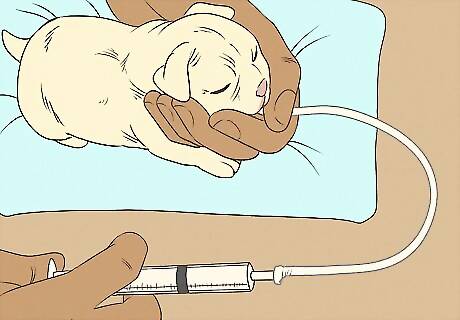
Press down on the syringe slowly. Lay the puppy on your lap with one hand behind the puppy's head. Hold the syringe vertical above the puppy's head, and slowly press down on the plunger. If you go too quickly, the milk might go up into their nose or they might get air in their stomach. If you notice milk dribbling out of their nose or mouth, stop. Once you are done, pinch the end of the tube, and quickly remove it from the puppy's mouth.
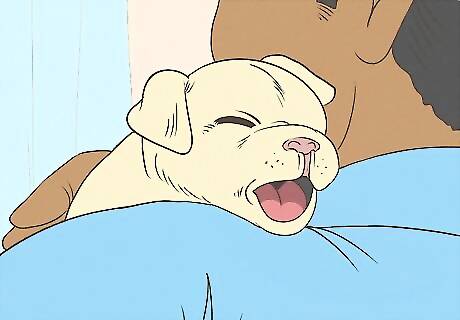
Burp the puppy. Hold the puppy up against your shoulder, with their belly against your shoulder and their head on your shoulder. Gently pat their back until they burp. This will help release any air that accidentally got in their stomachs during tube feeding.
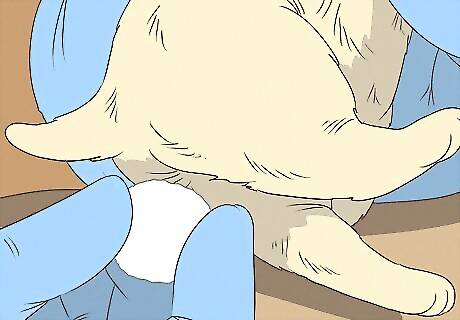
Massage the puppy to help them eliminate. Typically, the mother licks the puppy to help the puppy relieve themselves before or after nursing. In the mother's place, you will have to do this instead. Take a warm, damp washcloth, cottonball or tissue. Gently rub around the puppy's genitals and anus until they urinate and defecate. If you cannot get the puppy to eliminate after nursing, you might try doing this beforehand.
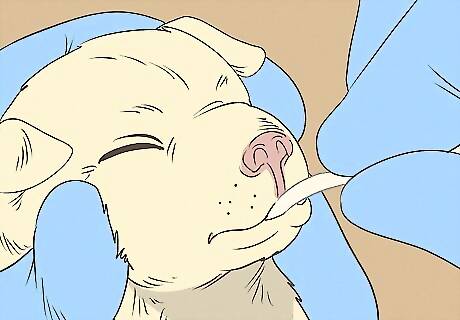
Repeat every two to four hours. Newborns may need to be fed every two hours for the first week or two. After that, you can start feeding them every three to four hours. By the time they're 12 ounces, you can start feeding them every five hours.
Getting the Surgery Performed
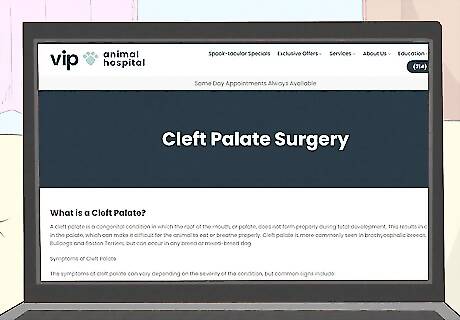
Find an experienced animal hospital. Not all vets perform cleft palate surgery. If yours does not, find a local animal hospital that not only performs these surgeries but has a high success rate. Some dogs might require multiple surgeries, but with an experienced surgeon, this chance decreases. Ask your vet for a referral. They will probably know of an animal hospital that can help. Cleft palate surgeries are very difficult on young animals, and your vet will probably want to wait until they are three to four months old. Some surgeries may not take place until the puppy is eight or nine months old.
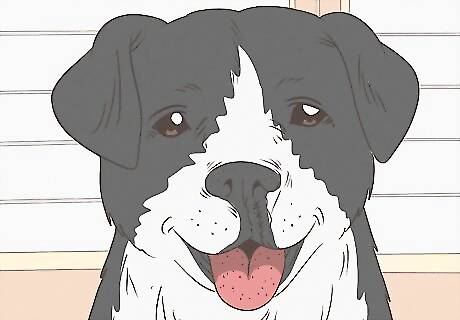
Monitor the cleft palate. Some cleft palates may close on their own. If your vet advises you to wait until the puppy is older, you should check the palate frequently to see how it is healing. If you think that the palate is growing wider, you should call the vet to consider your options.
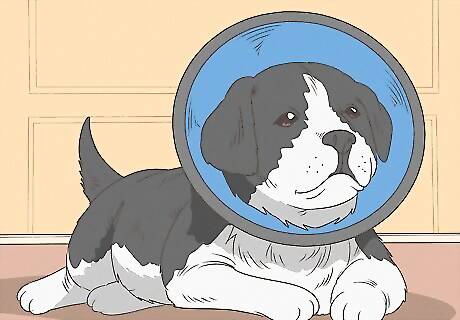
Protect their mouths after surgery. Your puppy will likely be required to wear an Elizabethan collar for one or two weeks after the surgery. This is to protect their mouths. In addition, you should avoid giving them toys, hard foods, treats, or other objects that they will put into their mouth. If you notice the puppy playing with their sutures or chewing on something they shouldn't, try to distract them. Call their name, clap your hands, or pick them up and remove them from that spot. This can help prevent a second surgery.
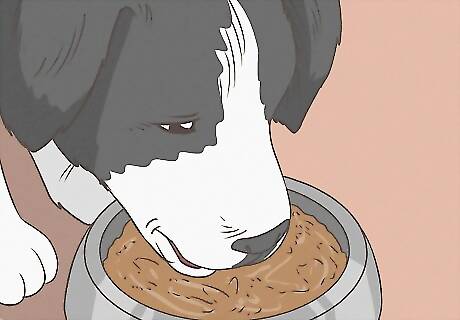
Feed them soft foods. To protect their sutures, you will not be able to feed them hard kibble, treats, or other foods for at least two weeks. Do not feed them any food that they have to chew. Your vet will have specific instructions for their post-surgery diet. If they have a soft palate cleft, you can feed them canned food for two weeks. If they have a hard palate cleft, you will need to blend their food. You will need to feed them by hand or by feeding tube.












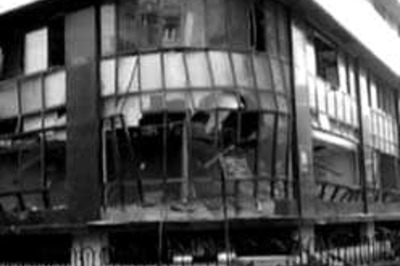



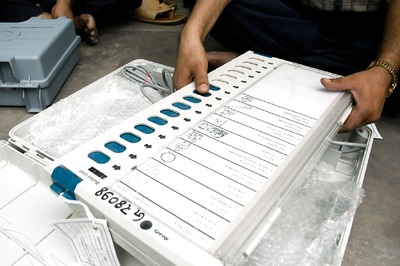

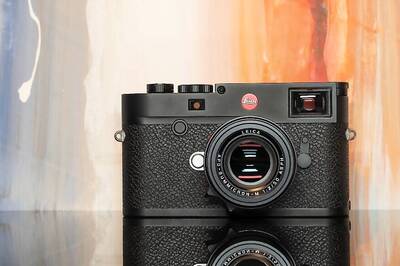
Comments
0 comment